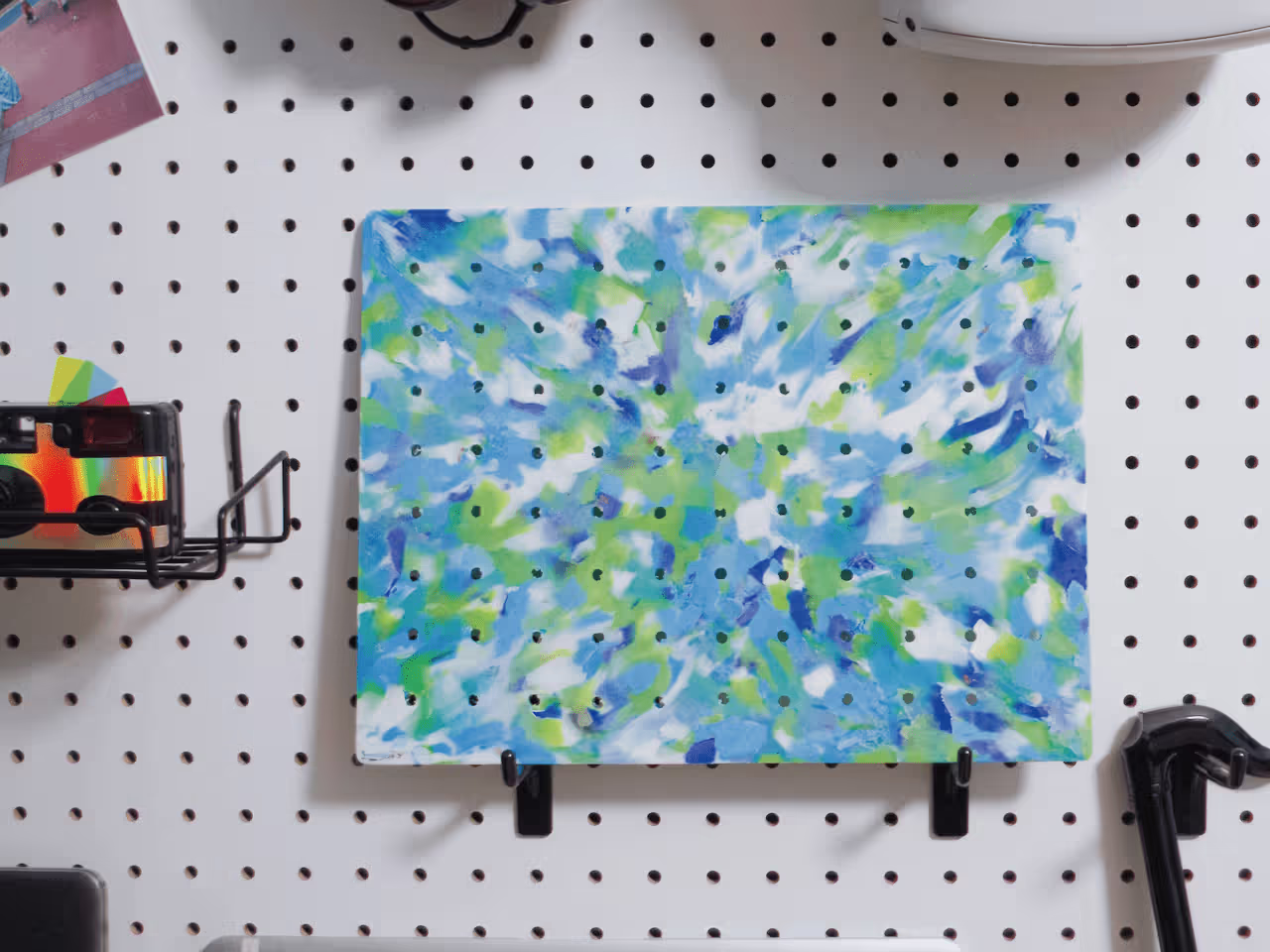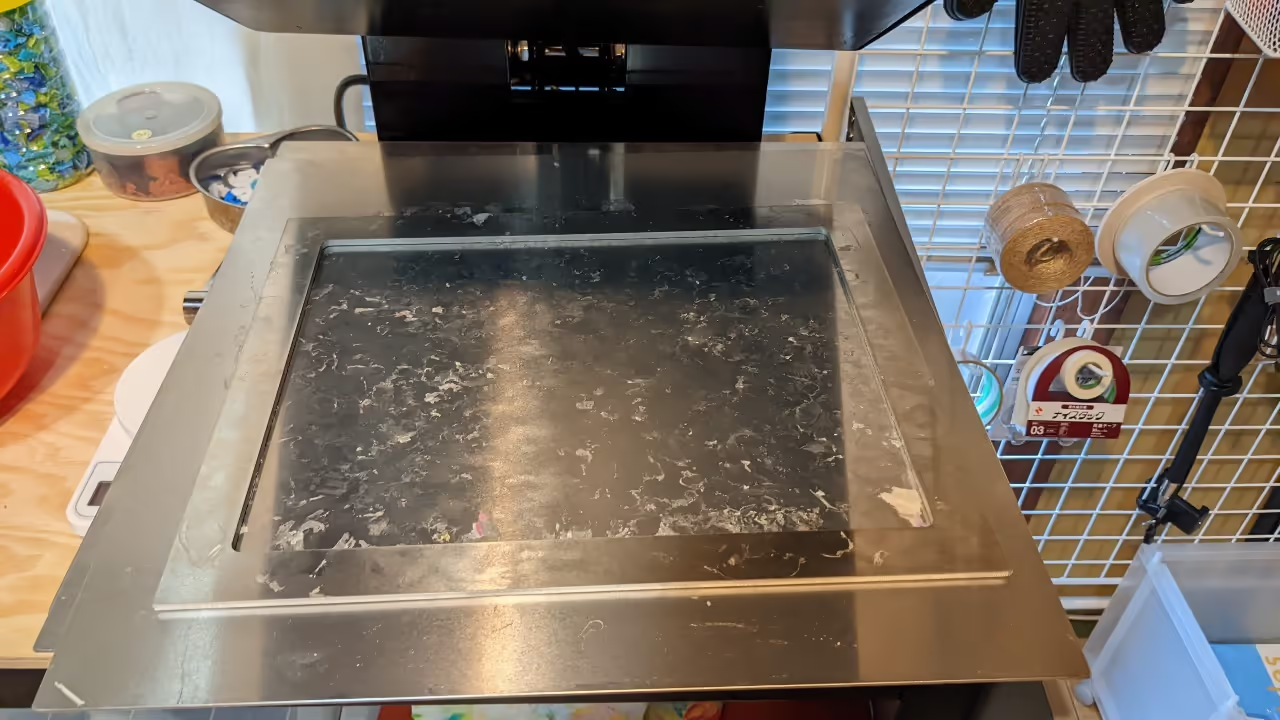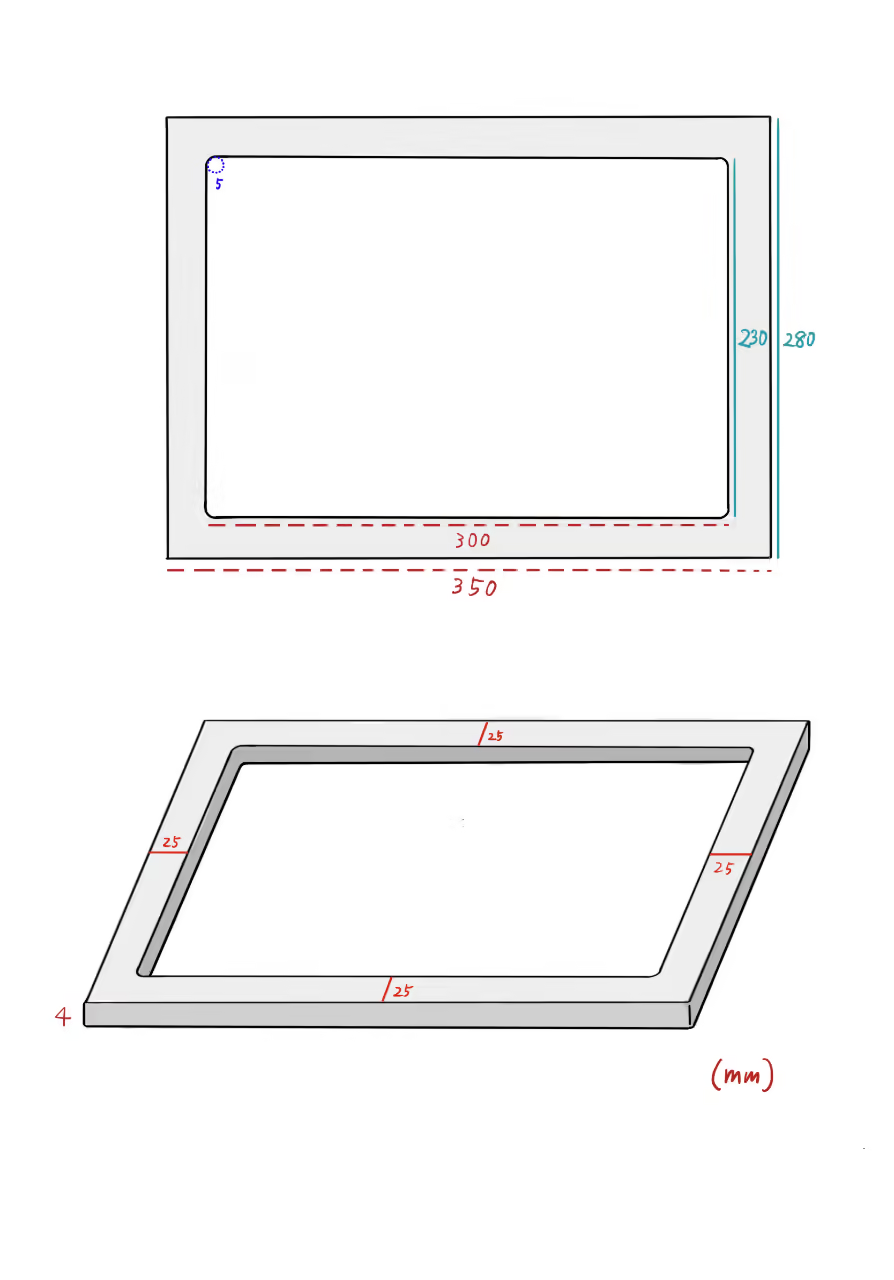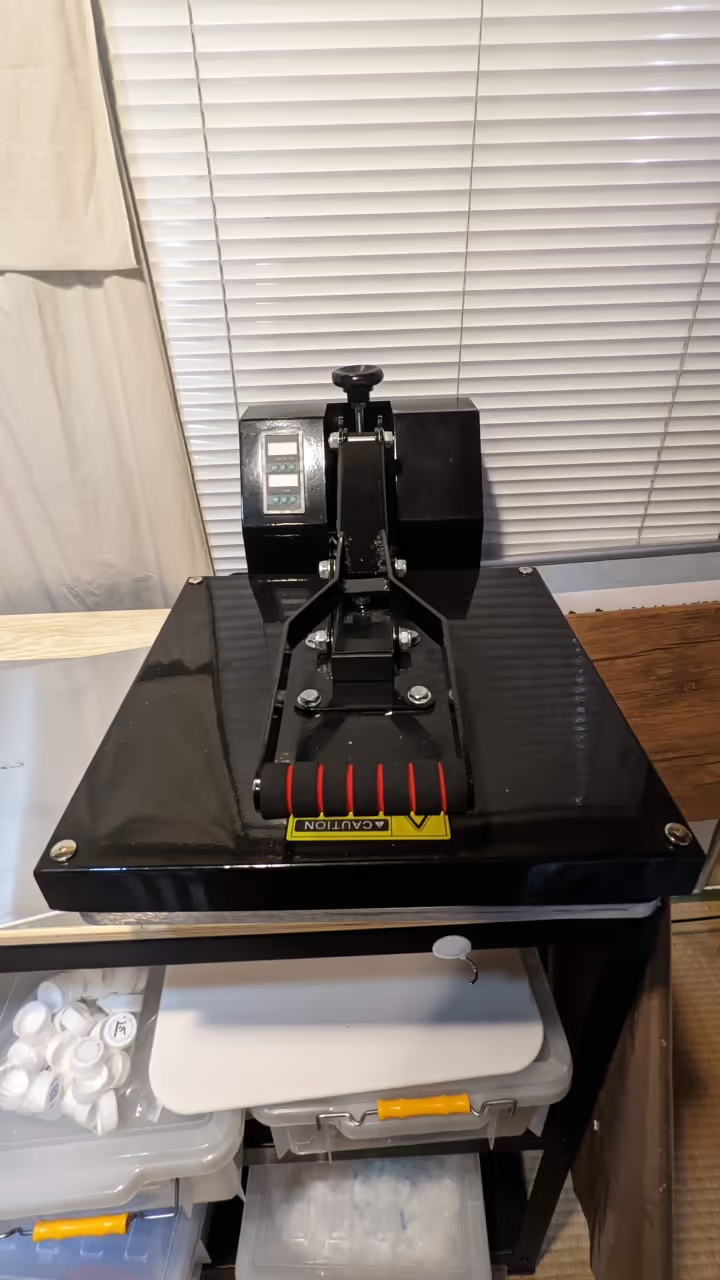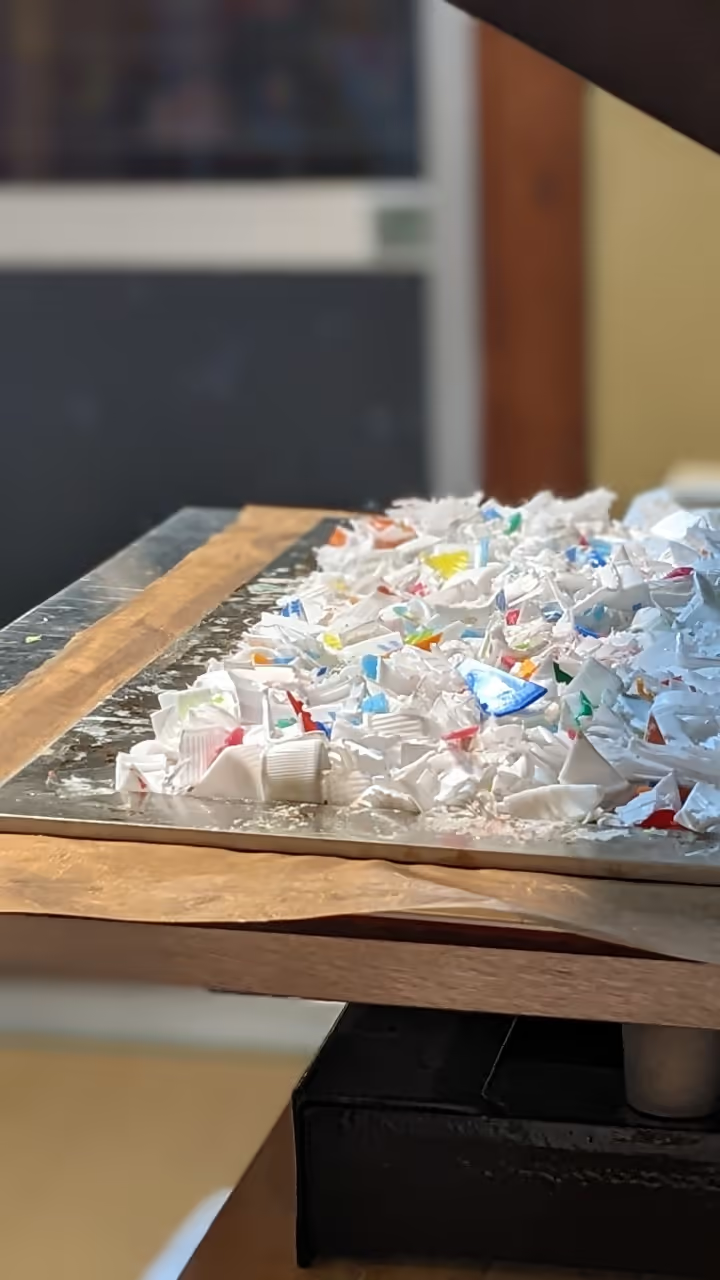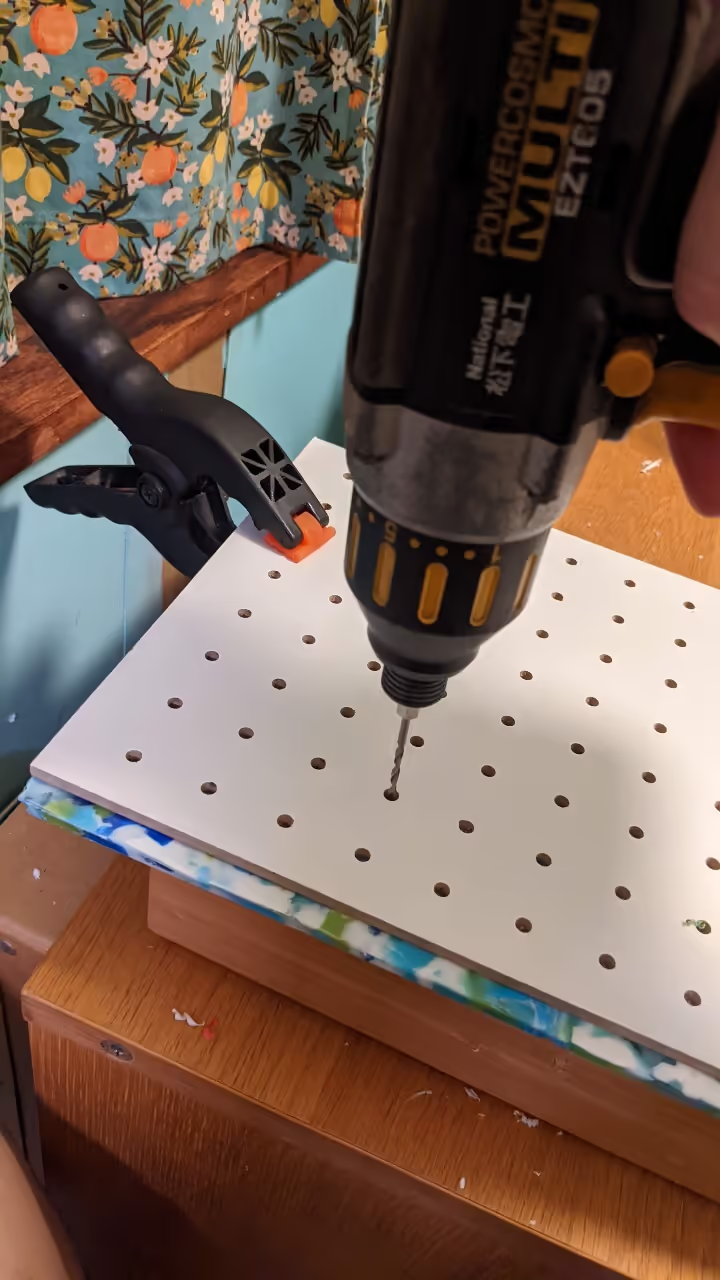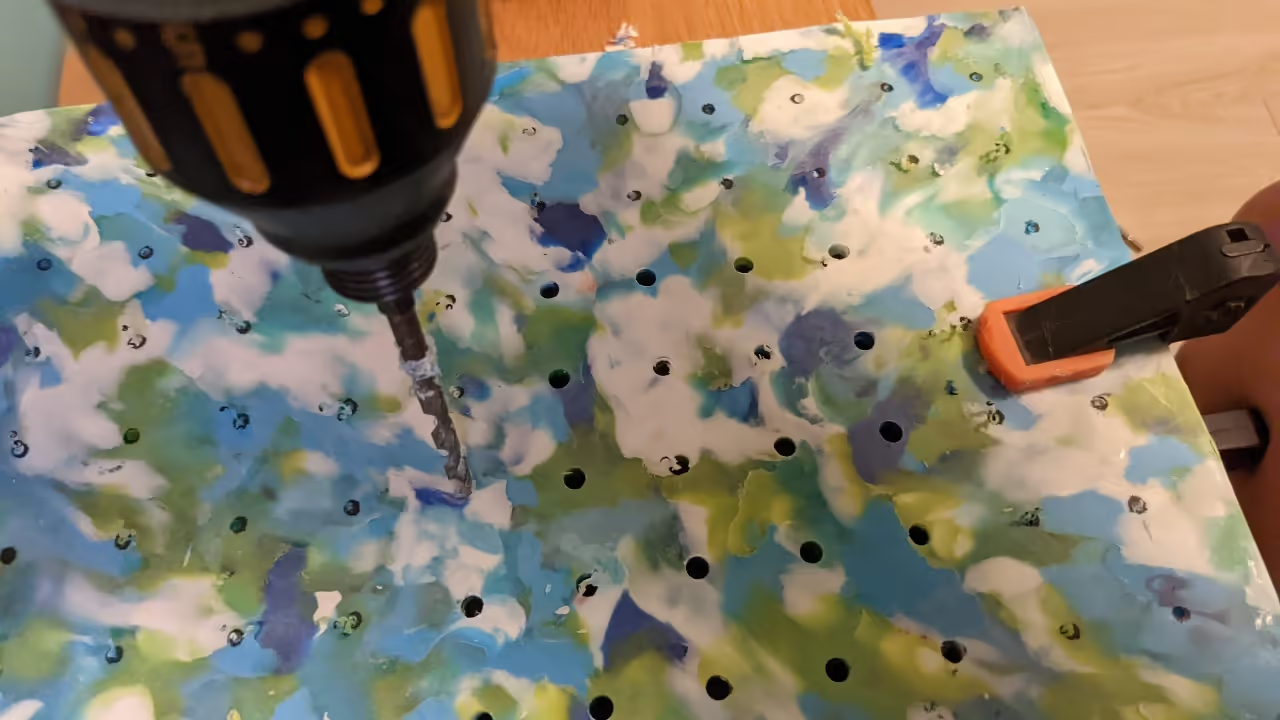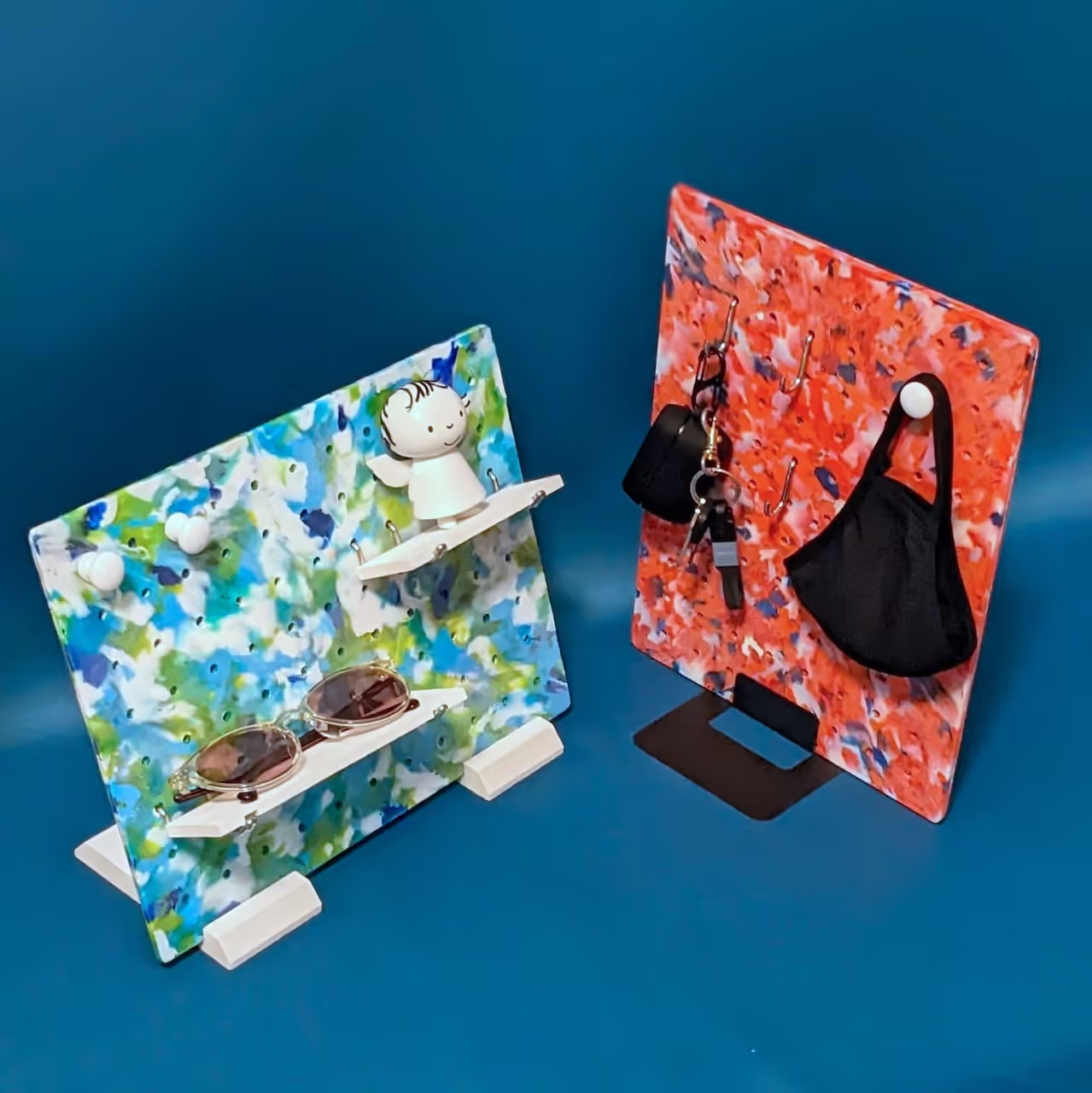This method employs a heat press machine and an aluminum mold to create a plastic board, which is subsequently shaped into a perforated board.
Table of Contents
-
Materials
- Heat Press Machine: A commercially available heat press machine for iron-on printing with a 350x350 mm (13.78x13.78 in) heat surface.
- Aluminum Frame: Ordered from an online supplier, the frame is 230x300x4 mm (9.06x11.81x0.16 in) with a 5 mm (0.2 in) corner radius. It is sandwiched between two 2 mm (0.08 in) aluminum sheets and pressed.
Reference
- Steps 1 and 2 are adapted from "Zero Plastic Australia's Sheet Machine" guide.
-
Aluminum sheet - Teflon sheet - Milled plastic & aluminum frame - Teflon sheet - Aluminum sheet
Arrange the materials in a heat press in the specified order. Apply silicone spray thoroughly to the aluminum frame. Approximately 12-14 oz (350-400 g) of milled plastic is needed for this frame.
Close the heat press and set it to 356°F (180°C) for 30-40 minutes. Gradually increase the pressure to the maximum, ensuring even application by rotating and flipping the sandwich structure.
After heating, turn off the press, keeping the pressure applied as the plastic cools and solidifies. Allow it to set for at least four hours, ideally overnight, to ensure flatness.
Once cool and solidified, remove the plastic sheet from the frame. Trim any excess with scissors, and the sheet is ready for use.
-
Prepare a pegboard for guides. I used a pegboard measuring 11.8 x 7.9 inches (30 x 20 cm) with 5 mm holes spaced 25 mm apart.
Stack the pegboard on the plastic board and secure them with clamps. Drill 0.08-inch (2 mm) guide holes centered on the perforations.
Once the guide holes are complete, remove the pegboard. Secure the plastic board to the workbench and use a 0.2-inch (5 mm) drill bit to create the final holes based on the guides.
-
After drilling all holes, remove any remaining plastic debris. Smooth the surface with an orbit sander. Sand up to about #2000 grit to achieve a bright color.
The plastic pegboard is now complete.
For questions, please contact pebbles.recycleplastic@gmail.com.
Tools
- Electric drill with 2mm and 5mm bits
- Orbit sander
- Clamps
- Scissors
- Sandpaper (up to #2000 grit)
Hardware
- Heat press machine (350x350 mm plate) ~~Reference~~
- Aluminum frame (230x300x4 mm with 5mm radius)
- Aluminum sheets (2mm thickness)
- Teflon sheets
- Pegboard (30x20 cm, 5mm holes spaced 25mm apart)
Materials
- Milled plastic (350–400 g per sheet)
- Silicone spray
- Plastic debris removal tools
- Safety gear (implied for heat/drilling)
Links reflect adaptions from "Zero Plastic Australia's Sheet Machine" guide mentioned in the tutorial. Specific suppliers aren’t listed in the source text.
Articles
Books
Papers
YouTube
Opensource Designs
- Zero Plastic Australia's Sheet Machine
- [filtered] Injection Machine
- $50 Plastic Shredder
- Create a Peg Board
